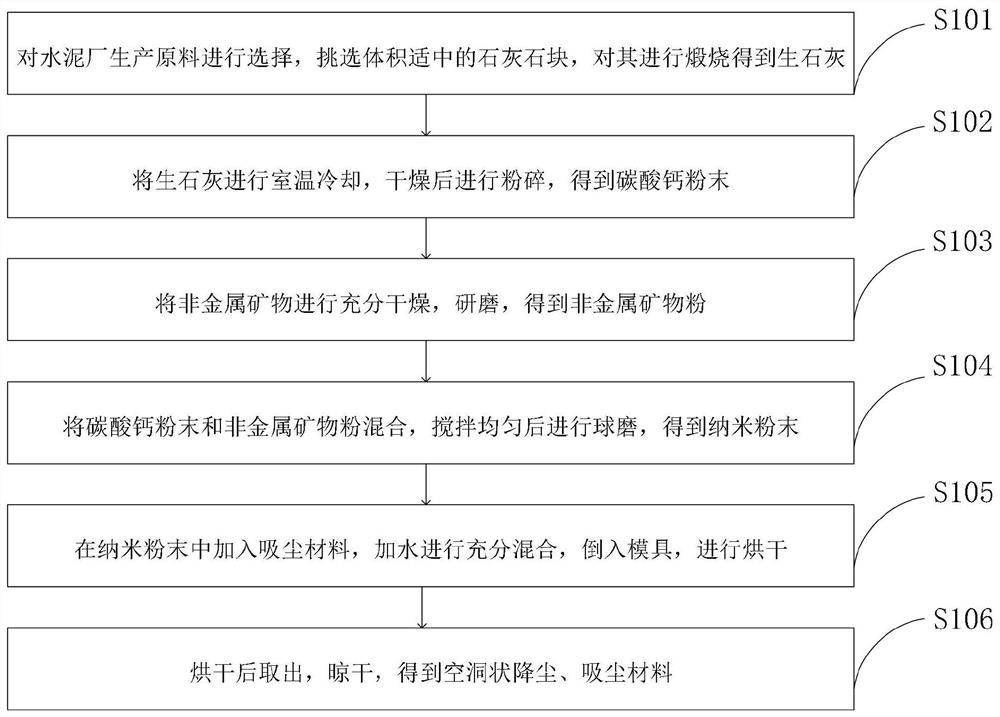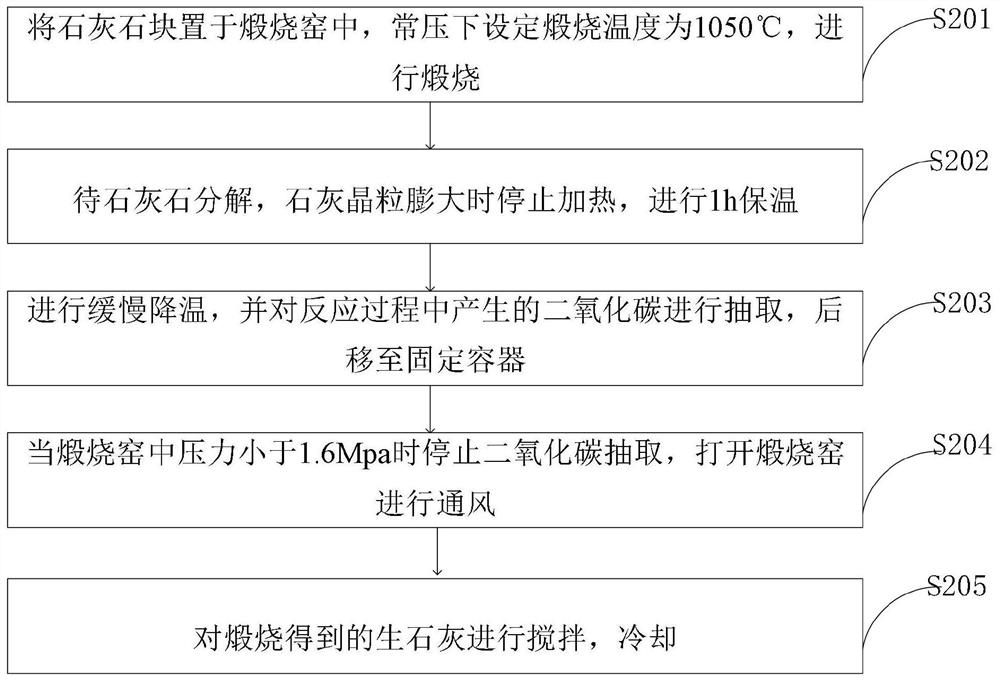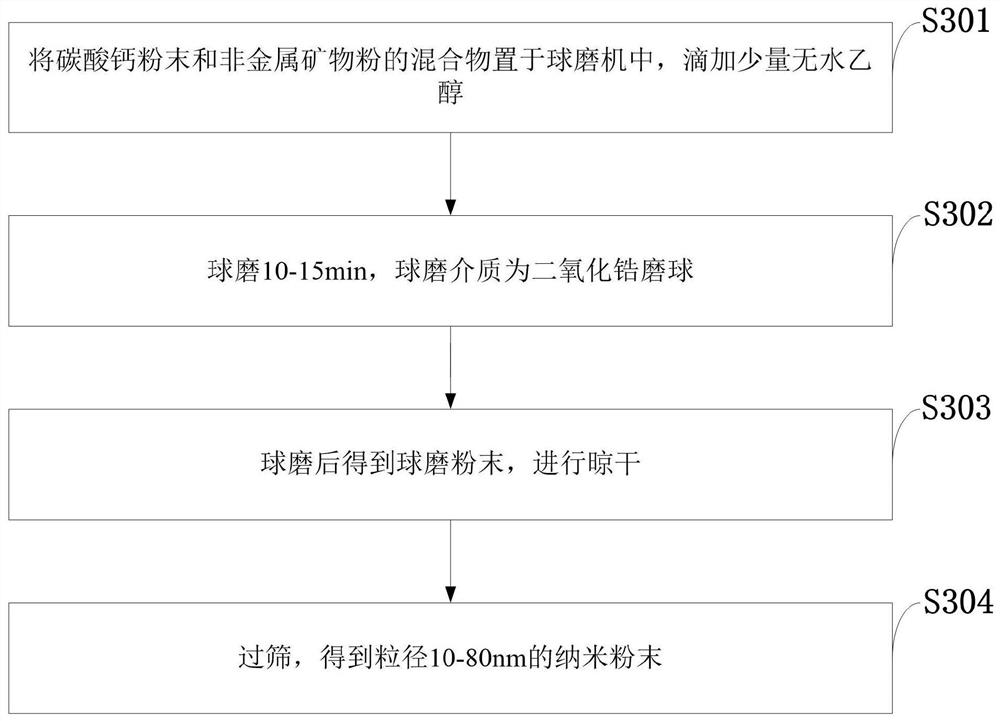Method for producing dust-reducing and dust-absorbing materials from raw materials for non-metallic minerals and cement plants
A non-metallic mineral, cement plant technology, applied in nanotechnology, calcium carbonate/strontium/barium, nanotechnology, etc. for materials and surface science, can solve the problem of difficulty in large-scale popularization and the purchase cost of dust treatment equipment High, inability to achieve dust reduction in the production workshop, etc., to achieve the effects of low density, good dust collection effect and low cost
- Summary
- Abstract
- Description
- Claims
- Application Information
AI Technical Summary
Problems solved by technology
Method used
Image
Examples
Embodiment 1
[0074] Select limestone blocks with moderate volume in the cement plant, about 10cm×10cm×20cm in size, and calcine them to obtain quicklime;
[0075] The calcined quicklime is cooled to room temperature, and pulverized after drying to obtain calcium carbonate powder;
[0076] Fully drying and grinding the granite to obtain granite powder;
[0077] Mixing calcium carbonate powder and granite powder, stirring evenly, and then performing ball milling to obtain nano-powder with a particle size of 10-80 nm;
[0078] Add dust collection material to the nano powder, add water to mix thoroughly, pour it into the mold, and dry it;
[0079] After drying, it is taken out and air-dried to obtain a hollow dust-reducing and dust-absorbing material.
Embodiment 2
[0081] The adsorption force of the hollow dust-reducing and dust-absorbing materials prepared in Example 1 was tested.
[0082] The main parameters to characterize the porous structure are porosity, average pore size, maximum pore size, pore size distribution, pore shape and specific surface. In addition to the material, the porous structure parameters of the material have a decisive impact on the mechanical properties and various performance of the material. Since the pores are formed by the accumulation, compaction and sintering of powder particles, the physical and chemical properties of the raw powder, especially the size, distribution and shape of the powder particles, are the main factors that determine the porous structure and even the final use performance.
[0083] The detection of the adsorption force of the hollow dust-reducing and dust-absorbing materials in the embodiment of the present invention includes particle size, porosity, and average pore size. The specific...
PUM
| Property | Measurement | Unit |
|---|---|---|
| particle diameter | aaaaa | aaaaa |
Abstract
Description
Claims
Application Information
 Login to View More
Login to View More - R&D
- Intellectual Property
- Life Sciences
- Materials
- Tech Scout
- Unparalleled Data Quality
- Higher Quality Content
- 60% Fewer Hallucinations
Browse by: Latest US Patents, China's latest patents, Technical Efficacy Thesaurus, Application Domain, Technology Topic, Popular Technical Reports.
© 2025 PatSnap. All rights reserved.Legal|Privacy policy|Modern Slavery Act Transparency Statement|Sitemap|About US| Contact US: help@patsnap.com



